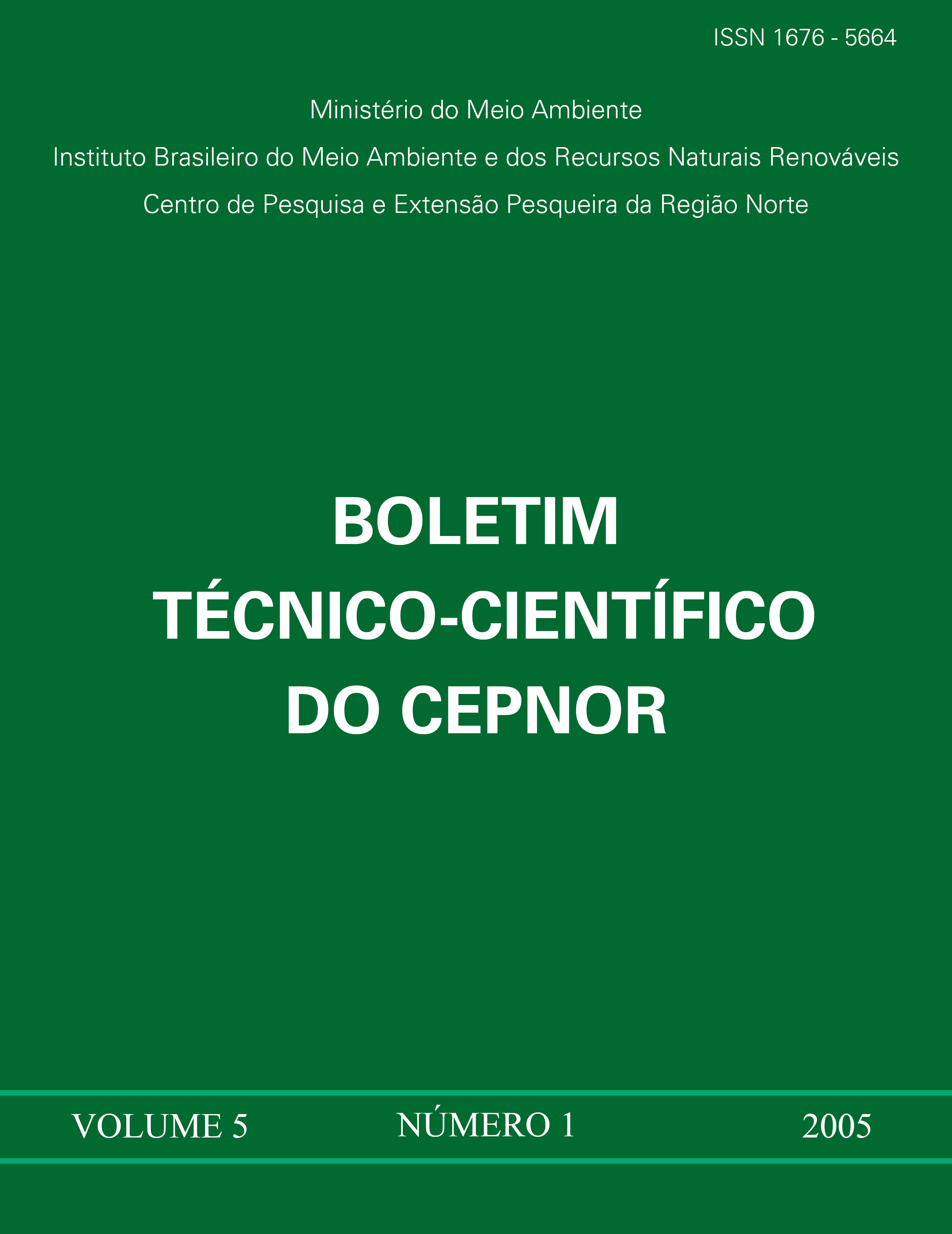1256 A Pesca De Curral No Estado Do Pará
Palavras-chave:
fish-weir, main species, fishing effortResumo
The Northern region of Brazil presents a varied coastline where countless estuarine
systems are located. It displays low topography and high volumes of freshwater,
mainly from Amazonas River, producing complex oceanographic processes
depending on one another, which exercise a strong influence on the distribution of
its live resources. A study of the production, fishing effort and the capture for unit
of effort (CPUE) of the main species of fish captured by fish-weirs in the Amazonian
coast of Pará State during the period from 1995 to 2002, was carried out with the
aim at supplying subsidies for the adequate management of this kind of fishery.
For such a purpose the data on catch statistics collected by the ESTATPESCA
Project in 15 counties, and by means of interviews with fishers and middlemen
were analyzed. The fish production by fish-weirs followed the same decreasing
trend as that of total production in years 1995-2002, but with a slight recovery in
2002. The species that stood out as to fish production, in a decreasing order of
their take in the catch, were: king weakfish (Macrodon ancylodon), 38 %, thomas
sea catfish (Arius herzbergii), 10 %, coco sea catfish (Bagre bagre), 6 %,
whitemouth croaker (Micropogonias furnieri), 4 % and torroto grunt (Genyatremus
luteus), 2 %. The most productive counties were: Quatipuru (19.07 %), Curuçá
(17.11 %), Bragança (12.12 %) and Marapanim (8.14 %). The fishing effort followed
a growth tendency during the whole period (1995 to 2002), with a small reduction in
2001 and ready compensated in 2002. Annual yield and CPUE of thomas sea
catfish, coco sea catfish, torroto grunt and king weakfish showed a downward
trend while that of whitemouth croaker kept stable along the period. The results of
the variance analysis through Kruskal-Wallis’ H test and discrimination among mean
annual CPUEs for each of the main five species proved to be statistically significant.
Linear and exponential surplus production models were used to estimate optimum
values of sustainable yield, fishing effort and productivity. The annual applied effort
on coco sea catfish was 66.6 % above its optimum and hence their correspondent
figures for sustainable yield and catch per unit effort amounted only to 58.6 and
35.2 % of their optimum values. The other main species likewise figures were:
whitemouth croaker = 143.3 %, 74.2 % and 51.9 %; torroto grunt = 165.6 %, 72.8
% and 44.3 %; thomas sea catfish = 172.0 %, 43.6 % and 25.3 %; king weakfish = 173.1 %, 45.4 % and 26.2 %. The decrease in fish production by fish-weirs implies
that fishing effort above acceptable levels may lead to an overfishing situation
whereby recovery is difficult and harmful effects are brought to bear upon
productivity and economic revenues from the fish-weir fisheries.





